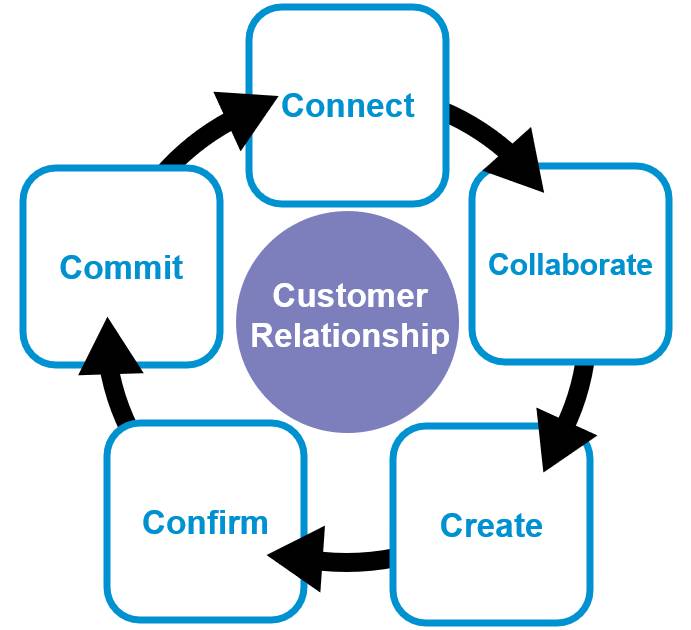Get Started with Relationship Selling
Learning Objectives
After completing this unit, you’ll be able to:
- Explain the five steps of the Dale Carnegie Sales Model.
- Recognize relationships and trust in the context of selling.
The Dale Carnegie Sales Model
Armed with pricing and information from your website, reviews from the internet, and recommendations from colleagues and friends, customers complete 70% of the buying process without engaging with a salesperson.
Only intentional sales professionals who foster authentic customer-centered relationships can truly help their customers succeed. A strong relationship enables the salesperson to build trust, offer insights, and then help the customer meet their business objectives. Only through enduring and meaningful relationships can sales professionals learn which approach will create the best opportunity for client success. True relationships foster loyalty, which in turn builds a sustainable pipeline, ultimately making it possible to meet or exceed goals and quotas.
Dale Carnegie's proprietary Sales Model and Process is adaptable within any sales culture and fits any salesperson’s style. Dale Carnegie recommends that you treat sales like you treat other relationships. It’s give and take, with a heavy emphasis on give!
And it all comes down to trust. Before we delve into the process, let’s take a brief look at each step.

Step 1: Connect
Before you can move the sale forward, you must connect with the customer. This is the first opportunity to begin building rapport and trust. Along the way, show that you care about the customer and their needs. Consider the Trust Is Dead whitepaper. If you skip this step, you have no foundation to move forward on.
Step 2: Collaborate
As you establish yourself as a trusted advisor, you create a feeling of collaboration. In this step you uncover true needs, wants, goals, and desires. It’s the time to understand where they are currently, where they want to be, what is standing in the way, and what the impact would be if they could achieve their goals. If you skip this step, you won’t have clarity about what’s important to them. There are no insights on where to go next.
Step 3: Create
When you have a good understanding of needs or wants, you can create a sales presentation that’s relevant and meaningful. Work with your customer to find a solution that meets their needs and goals. Customize it to that specific person—use the language they conveyed in your dialogue, rather than your own vernacular or jargon. Use evidence, examples, and position the solution based on all you learned in the previous steps. Dale Carnegie has tools and resources to help with this step. We will review some of them in this module.
Step 4: Confirm
After describing the solution in a customized presentation, confirm with the customer that it will be effective. Will it solve their problem? Will it present an opportunity? Are objections resolved?
Step 5: Commit
Lastly, the salesperson and the customer commit to the sale. Your customers commit to the purchase, and you commit to following up and continuing a relationship with them. A trusting relationship with the customer is the most important factor in making the sale. This is because trusting relationships can lead to repeat business, larger purchases, and referrals.
You take a deeper look at Dale Carnegie’s first step, Connect, in the next unit.
